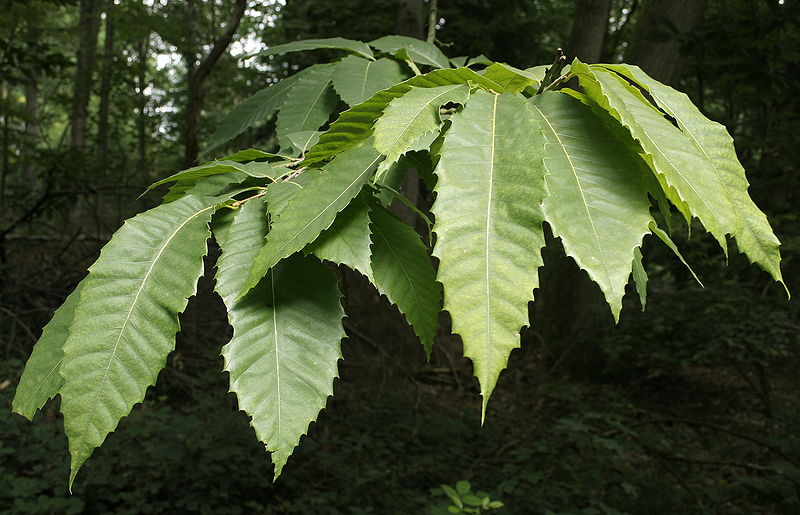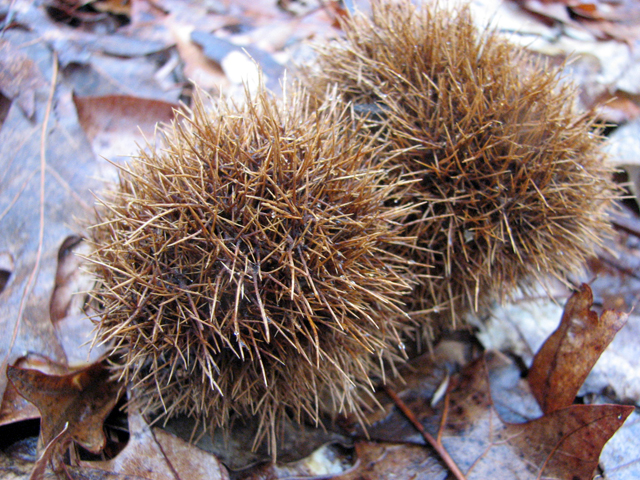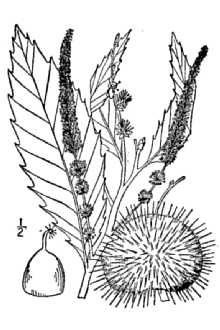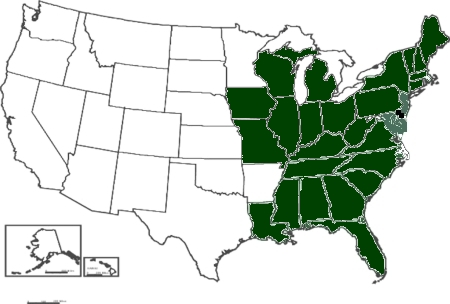Castanea dentata
  |
 |
Photos courtesy Renee Brecht, bottom, Wikicommons, top |
Britton & Brown |
| Botanical name: | Castanea dentata (Marsh.) Borkh. |
| Common name: | American chestnut |
| Group: | dicot |
| Family: | Fagaceae |
| Growth type: | tree |
| Duration: | perennial |
| Origin: | native |
| Plant height: | 100-150' but often now only to 20', as most mature trees were lost to blight |
| Foliage: | large, alternate, simple, widely spaced dentate leaves; twigs are hairless |
| Flower: | monoecious; green to white male flowers in catkins; females near twig near base of twig. Fruit is large, round, spiny husk |
| Flowering time: | late spring/early summer |
| Habitat: | |
| Range in New Jersey: | |
| Heritage ranking, if any: | n/a |
| Distribution: |  |
| Misc. | During the 1900s, chestnut blight struck most of the American chestnuts and few survived. Most of what is seen now is planted Chinese Chestnut, which is blight resistant. The United States National Arboretum has been working to backcross American chestnut with the Chinese strain to create a disease resistant strain with American characteristics. For more information, visit the American Chestnut Foundation |